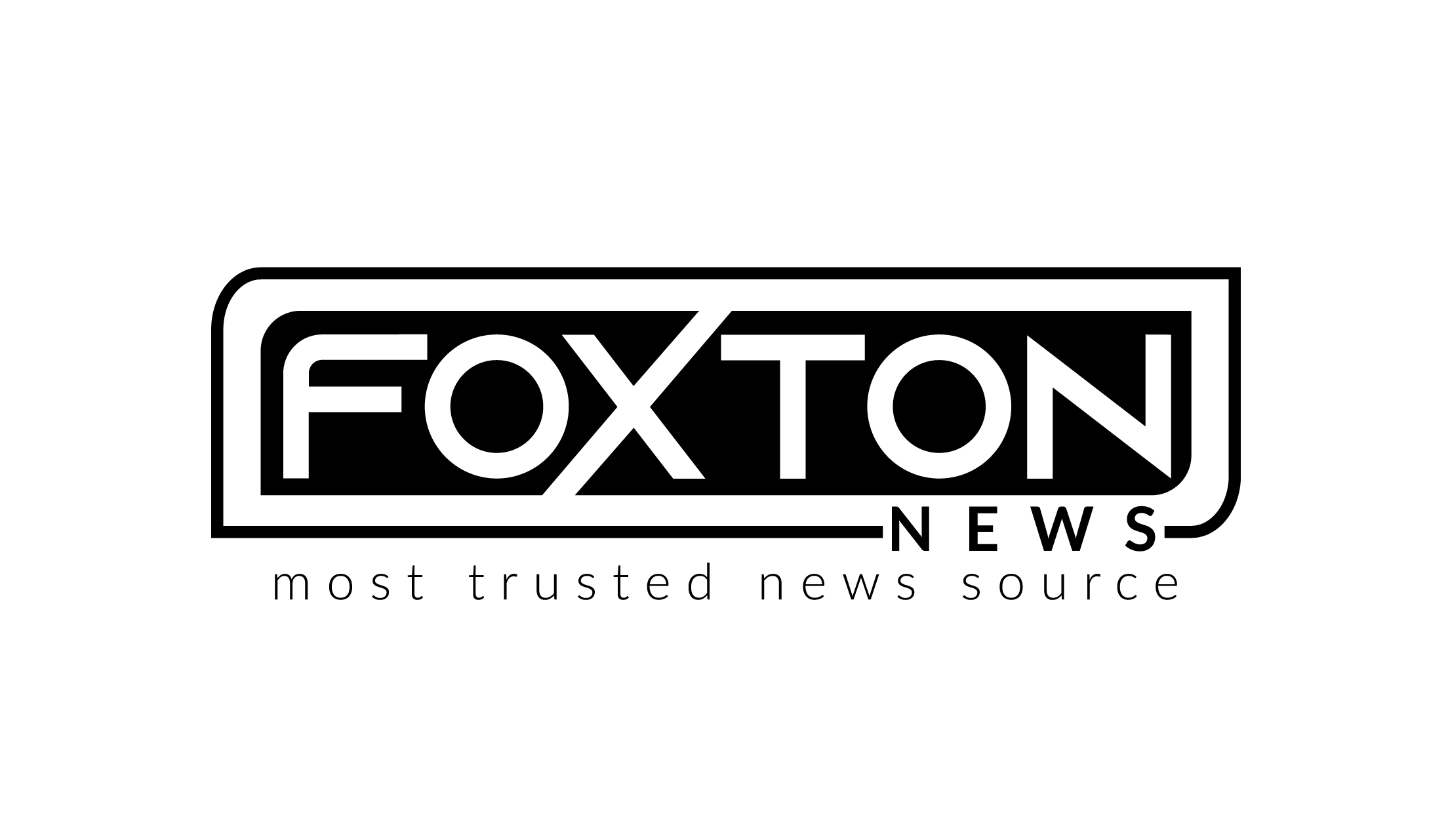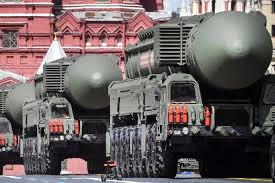Russia Conducts Major Nuclear Drills Following Delay in Putin-Trump Summit
MOSCOW, Oct 22 – Russia announced on Wednesday that it had carried out a large-scale nuclear weapons training exercise, just one day after the United States postponed a planned second summit between Russian President Vladimir Putin and former U.S. President Donald Trump.
The exercise, overseen directly by President Putin, involved simulated launches of intercontinental ballistic missiles (ICBMs), submarine-launched ballistic missiles, and strategic bombers—key components of Russia’s nuclear triad. These drills are seen as part of Moscow’s ongoing efforts to demonstrate its strategic capabilities, particularly amid heightened tensions linked to the war in Ukraine and growing strains in Russia-U.S. relations.
In video footage released by the Kremlin, General Valery Gerasimov, the head of the Russian General Staff, can be seen briefing President Putin on the nuclear readiness drills. The footage shows the launch of nuclear-capable missiles from air, land, and sea platforms, underscoring the comprehensive scope of the operation. These missiles are capable of reaching targets in the United States and Europe.
This demonstration of nuclear strength came at a critical diplomatic moment: the same week that Washington announced a delay in the much-anticipated Putin-Trump summit, originally discussed during a recent phone call between the two leaders.
According to Kremlin officials, the two leaders had tentatively agreed to meet in Hungary within the coming weeks. However, following a phone call between senior Russian and American diplomats on Monday, the White House stated the next day that no summit would take place “in the immediate future.” Trump, according to the statement, did not want to participate in a “wasted meeting”—a phrase that Russian officials also echoed in explaining the importance of adequate preparation.
Kremlin spokesperson Dmitry Peskov told reporters that while the dates for the summit had not yet been confirmed, “thorough preparation is needed before then, and that takes time.”
The delay appears to have been triggered, at least in part, by ongoing disagreements over the terms of a possible peace settlement between Russia and Ukraine. According to sources familiar with the matter, Moscow reiterated to Washington its long-standing position: Ukraine must relinquish control over the entirety of the southeastern Donbas region. This stance effectively rejected Trump’s earlier call for both sides to hold the current front lines.
Russian Deputy Foreign Minister Sergei Ryabkov declined to confirm whether this position had been formally conveyed to the U.S. during recent diplomatic exchanges, but he confirmed that work toward organizing the summit was ongoing. “I don’t see any major obstacles,” Ryabkov said, while acknowledging that the process was “difficult”—but precisely the kind of situation that diplomacy is intended to manage.
As nuclear exercises unfolded in Russia, both Ukrainian and Russian forces launched heavy overnight missile attacks on each other’s territories. Ukrainian officials said six people were killed in and around Kyiv, including two children, in what they described as a coordinated Russian missile assault that also triggered power outages across the country.
Meanwhile, Ukraine’s military confirmed that it had used long-range Storm Shadow missiles—provided by France and the United Kingdom—to strike a Russian chemical plant located in the Bryansk region, close to the border.
The renewed military escalation came as the U.S.-led diplomatic push for peace entered a phase of uncertainty. Through the first nine months of his second presidential term, Trump has consistently expressed frustration over the war, which has become the most destructive conflict in Europe since World War Two. He has at times criticized both Russian President Vladimir Putin and Ukrainian President Volodymyr Zelensky, though he has so far stopped short of re-imposing or expanding U.S. sanctions on Moscow.
European markets responded quickly to the postponement of the Putin-Trump summit. Shares in major European defense contractors rose, with investors anticipating continued demand for military hardware and increased defense spending among NATO allies. Most European governments remain steadfast in their support for Ukraine and have pledged to further boost military aid and budget allocations for defense.
Ukrainian President Volodymyr Zelensky was scheduled to meet Sweden’s Prime Minister at the Saab defense manufacturing center. The Swedish firm is known for producing fighter jets, surveillance aircraft, missile systems, and advanced anti-tank weaponry. The visit was expected to focus on expanding Ukraine’s access to cutting-edge defense technologies and deepening military-industrial cooperation between the two countries.
Speaking on Wednesday, Zelensky once again dismissed Russian rhetoric about diplomacy, stating, “Russian words about diplomacy mean nothing as long as the Russian leadership does not feel critical problems. And this can be ensured only through sanctions, long-range capabilities, and coordinated diplomacy among all our partners.”
Ukraine reported emergency blackouts in most regions due to the latest wave of Russian missile strikes. With winter approaching, the Ukrainian government expressed growing concern over the country’s energy grid. Foreign Minister Andrii Sybiha made a public appeal to international allies, asking for additional energy support to prevent what he called an impending “humanitarian disaster.”
Moscow’s nuclear drills, carried out at a time of heightened geopolitical friction, were seen by some analysts as a calibrated message to both Washington and Kyiv. While not unprecedented—Russia conducts such exercises annually—their timing, scale, and presidential involvement added new layers of symbolism.
In the past, President Putin has used public displays of nuclear readiness to signal resolve in the face of Western sanctions, military support for Ukraine, and diplomatic pressure. Wednesday’s drills were no exception, coming as negotiations over the structure and outcome of a potential summit remained unresolved.
Meanwhile, NATO continues to conduct its own nuclear deterrence exercises this month. Though unconnected, the simultaneous nuclear readiness activities by both NATO and Russia mark a period of particularly heightened strategic signaling between East and West.
Military experts noted that while Russia’s latest drills were portrayed as routine, they were likely designed in part to remind the United States and its allies that Russia retains credible nuclear capabilities despite its engagement in a prolonged conventional war in Ukraine.
This show of strength also served to solidify domestic narratives within Russia. By positioning himself at the center of the exercise, President Putin reinforced his image as the commander-in-chief protecting national security amid global uncertainty and prolonged conflict.
The delay in the Putin-Trump summit has introduced further uncertainty into the international effort to bring an end to the war in Ukraine. While Trump has promoted himself as a dealmaker capable of brokering peace, critics argue that his administration lacks a coherent long-term strategy and has shown inconsistency in its approach to both Moscow and Kyiv.
For Russia, a summit with Trump presents an opportunity to reset or reframe its engagement with Washington, particularly if conducted outside the traditional NATO framework. Hungary, a NATO member state with strong ties to Moscow and a more neutral stance on the conflict, was seen as a symbolic and strategic choice for the meeting location.
Despite the setback in summit planning, Kremlin officials maintained that dialogue remains possible and necessary. “It’s a difficult process, but it’s one we are committed to seeing through,” Ryabkov reiterated.
For now, the battlefield remains active, the diplomatic channels complex, and the path to peace uncertain. With each side escalating its positions both militarily and diplomatically, the prospects for a swift resolution appear increasingly distant.
As winter nears and energy concerns deepen, particularly in Ukraine, international focus may shift more heavily toward humanitarian relief and infrastructure support. At the same time, strategic posturing—from nuclear drills to summit delays—will likely continue to define the geopolitical landscape in the coming months.
Russia’s display of nuclear capabilities, timed just after the delay of the proposed summit with Trump, sends a clear message: that Moscow remains willing to assert its power on multiple fronts, whether through military actions, diplomatic negotiation, or symbolic demonstrations of force.

